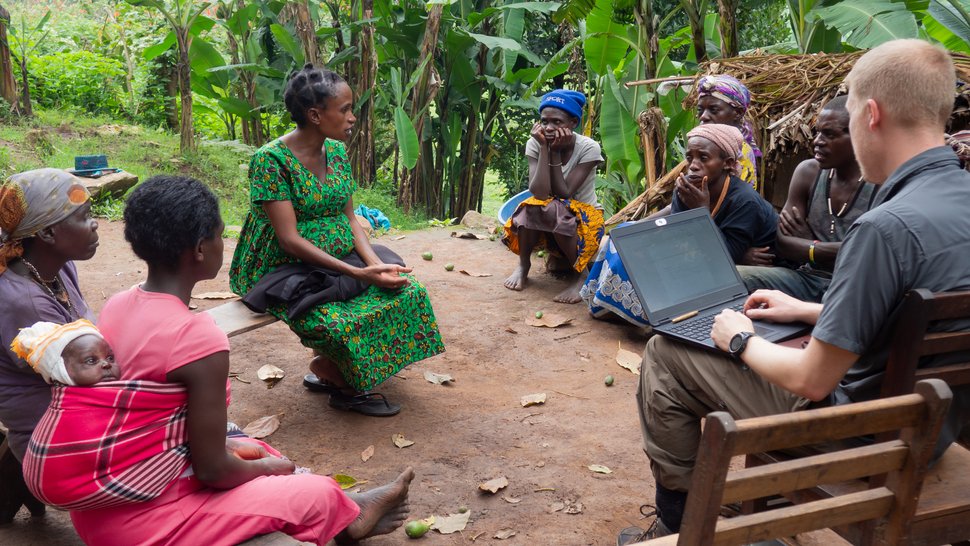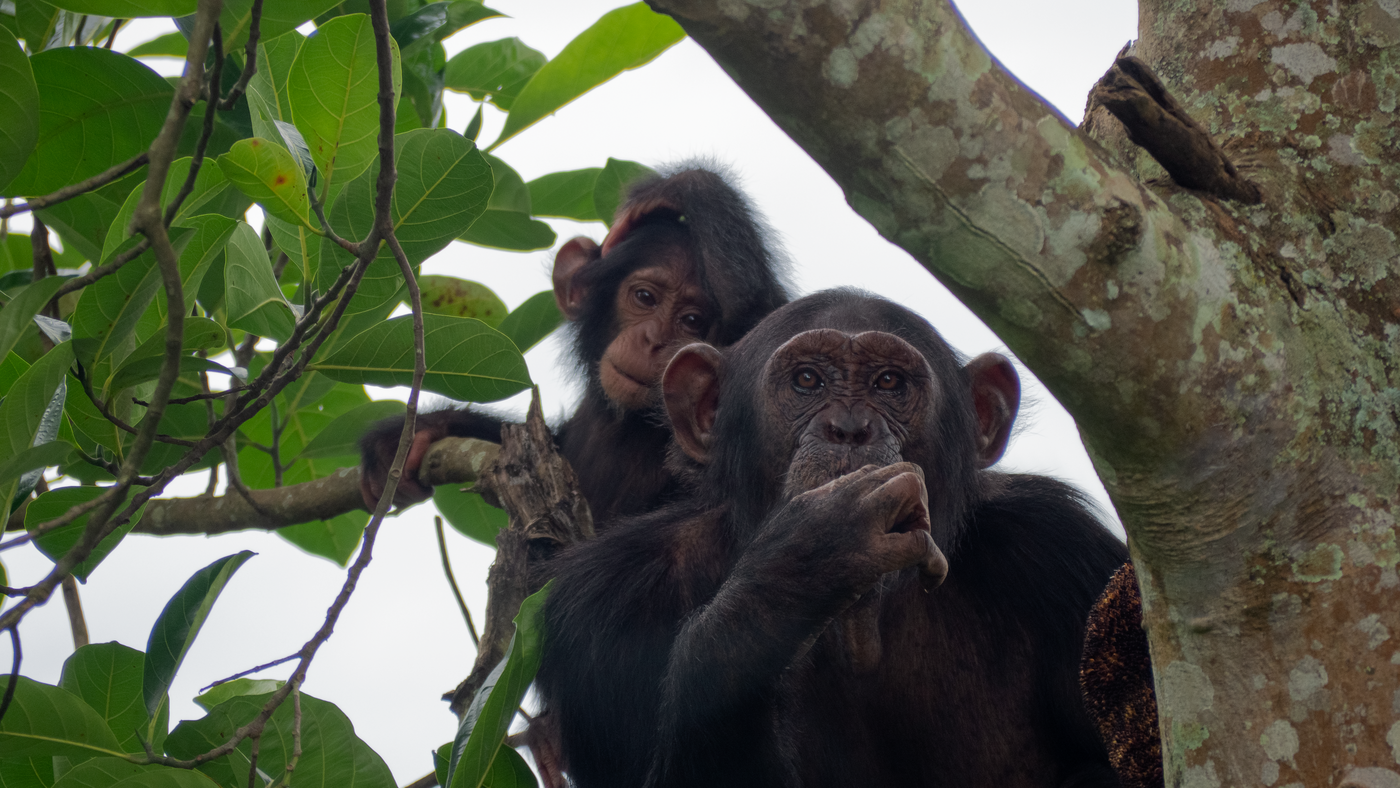In search of new active substances from natural remedies
New junior research group at BNITM
Hamburg, 23 Oktober 2024 – Dr. Fabien Schultz is heading the new junior research group, Ethnopharmacology and Zoopharmacognosy, at the Bernhard Nocht Institute for Tropical Medicine (BNITM) in the Implementation Section starting October 2024. Schultz works with indigenous people in African countries to collect natural remedies, such as plants, insects, and fungi. He also observes the self-medication of chimpanzees, mountain gorillas and elephants there. He and his team analyse the collected materials in the laboratory in Germany to determine whether they are pharmacologically active. Because many pathogens are resistant to conventional drugs, there is an urgent need to find new active substances and develop new drugs from them. Schultz is funded in part by the VolkswagenStiftung.

"We wish Fabien Schultz and his team a great start at the BNITM. Dr Schultz is working on exciting projects aimed at finding new approaches to the treatment of infectious diseases. Many researchers at the BNITM share this goal and we look forward to working with him,” says Prof. Jürgen May, Chairman of the BNITM Board of Directors.
Working with indigenous communities
The new junior research group, Ethnopharmacology and Zoopharmacognosy, pursues a participatory and sustainable research approach. Ethnopharmacologists study natural materials such as plants, fungi, animal secretions and insects that people use as remedies. The aim is to document knowledge about these traditional remedies and identify new pharmacological agents that could be used in modern medicine.
The highly interdisciplinary research group is also looking closely at the ethical aspects of its research. These include financial and non-financial benefit-sharing for the use of intellectual property, traditional knowledge and natural resources. In this context, Schultz and his team carry out community projects with the communities who are participating in the research, which is very important to Schultz.
"It is only with their expertise and cooperation that I can collect promising remedies. After the analysis, I try my best to give my findings back to the indigenous communities. I believe it is the responsibility of scientists to contribute to the transfer of knowledge once a study has been completed," says Schultz, explaining his approach.
Local people are also involved in the research group's second area of research: They also help with zoopharmacognostic studies, thanks to their decades of observation and expertise in the "pharmacy of the forest." The term zoopharmacognosy refers to the self-medication of animals and the pharmacological study of their remedies. The group is currently studying the behavior of mountain gorillas and chimpanzees in Uganda and Tanzania, and elephants in Kenya.

The SpiriPharm project
Over the next three years, the VolkswagenStiftung will fund the new project, "SpiriPharm - Between Emerald Worlds: Exploring the spiritual, ritual, and pharmacological facets of neuroactive materials used by humans and animals in Uganda and Tanzania," with 555,000 euros. For the first time, Schultz and his team want to document neuroactive, potentially mind-altering remedies used culturally, spiritually, ceremonially, ritually, or recreationally by local people at six study sites. Neuroactive means that these substances can affect nerve cells or interact with the signaling between nerve cells.

In this project, the research group members will also be tracking wild mountain gorillas and chimpanzees: Do they ingest mind-altering substances? If so, are these substances similar, or even identical, to the neuroactive substances ingested by humans? Through workshops, scientists share their research results with local communities, and through community projects, local people solve self-defined problems in a sustainable way. The question of intellectual property becomes more complicated: How can financial and non-financial compensation be achieved for the knowledge of the remedies, and what happens when the knowledge comes from mountain gorillas and chimpanzees? Schultz and his group hope to develop best-practice models. Another goal is to gain new insights into the health and societal well-being of neuroactive substances, which could possibly lead to a shift away from negative Western views on stimulants and tranquilisers.
Valuable library of natural compounds
Over the past few years, Schultz has built up a database of crude extracts. It currently contains more than 586 unique extracts from more than 142 plant, insect and fungal species from Uganda, South Africa, Burkina Faso, and Germany. With two out of every five plants currently threatened with extinction, Schultz and his team are archiving the substances for future generations. Most of them have never been studied in a laboratory. The junior research group is now changing that. For each remedy they collect, the researchers make three different extracts, each containing different ingredients. They are then testing the extracts for antibacterial and anti-inflammatory properties and whether they are effective against certain parasites. For example, they measure whether the extracts inhibit the growth of antibiotic-resistant bacterial pathogens, or disrupt biofilm formation or quorum sensing (the ability of bacteria to communicate with each other).
"We can analyse promising extracts in more detail. In the future, we want to use artificial intelligence to identify the pharmacologically active compounds in the extracts. The results I am looking for could have the potential for scientific breakthroughs. For example, we could discover new antimalarials, novel antibiotics or anti-inflammatories," concludes Schultz.
Downloads
Contact person
Dr Fabien Schultz
Research Group Leader
Phone : +49 40 285380-997
Email : fabien.schultz@bnitm.de
Dr Anna Hein
Public Relations
Phone : +49 40 285380-269
Email : presse@bnitm.de







